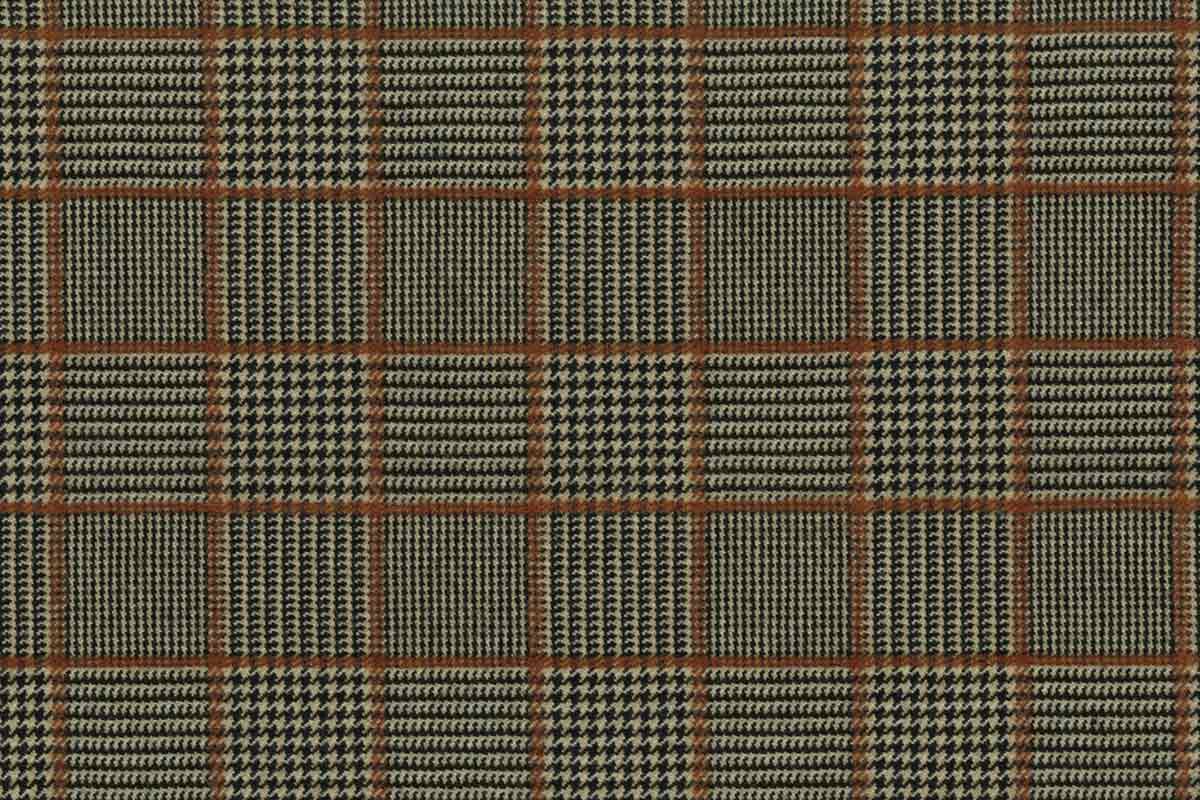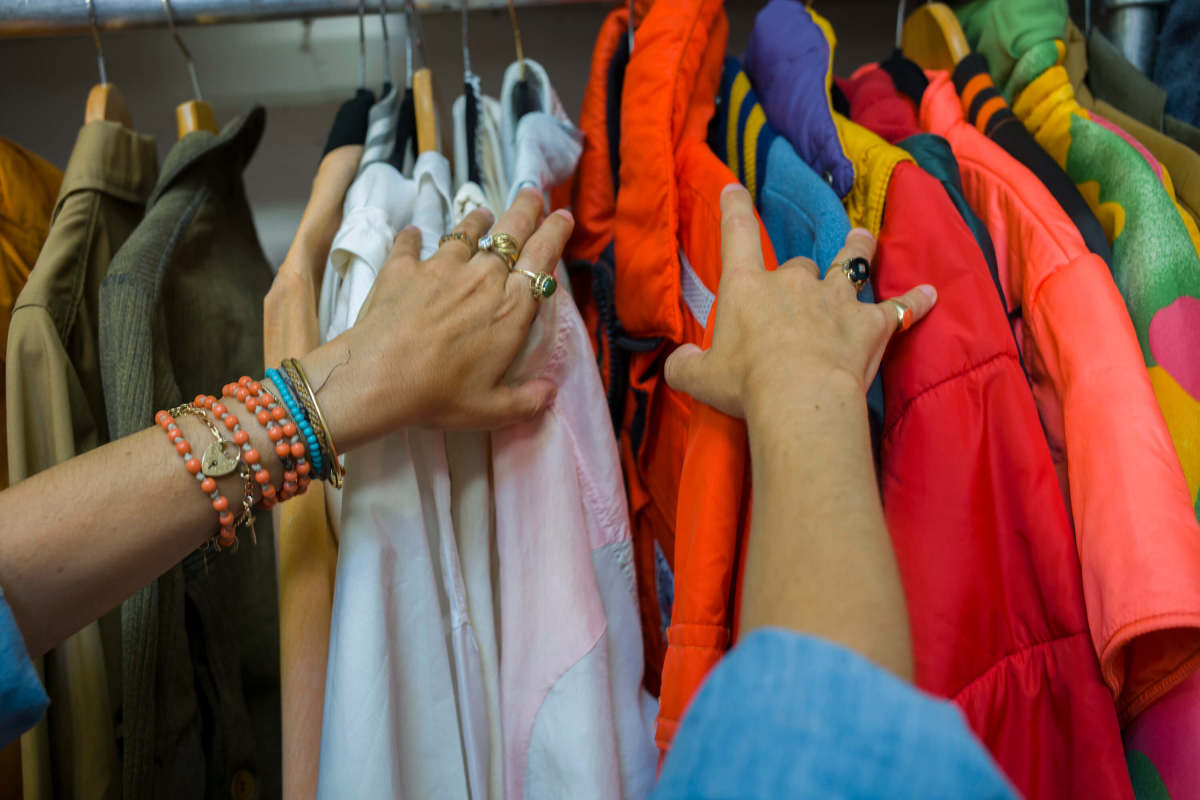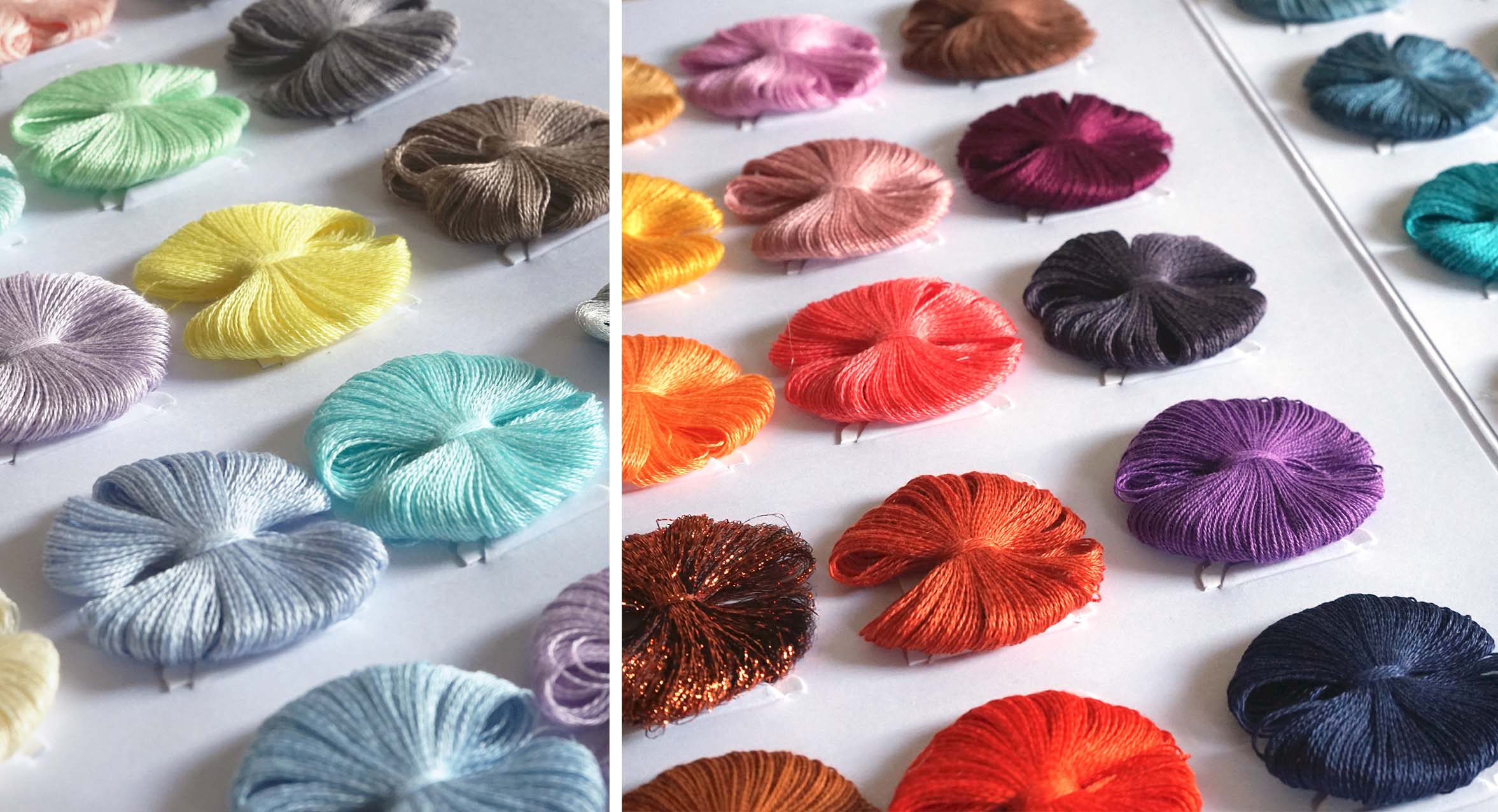Textile history in a nutshell
Textile Trend Books: from the Middle Ages to tomorrow
Fashion and textiles are material ideas, to understand them a description, or an illustration, is not enough. It is necessary to call on the experience of the senses: see and touch, provide a reference, a much used word in textile that comes from the Latin “referre” (let people know). This is what the textile trend books are for, whose roots date back to the Middle Ages.
Only those who do not understand anything about textiles talk a lot about the future.
– Nino Cerruti
The invention of textile references: fabric swatches and mannequin dolls
The textile trend books consist of fabric swatches, an orderly collection of samples used to present products to customers. In turn, the sample books were originally made of simple sheets of paper with pieces of fabrics glued on them.
In the old, pre-industrial world, these “textile sheets” were used by manufacturers and dealers in their correspondence to show the characteristics of their products, offer them to potential customers and discuss the price. Museums and State Archives keep documents of this kind that date back to Middle Ages.
Fashion and textiles are material ideas, to understand them a description, or an illustration, is not enough. It is necessary to call on the experience of the senses: see and touch, provide a reference, a much used word in textile that comes from the Latin “referre” (let people know).
To communicate its ideas about fashion and fabrics, the pre-industrial world invented the concept of sample and the miniature models worn by a doll.
Since the late Middle Ages mannequin dolls with amazing wardrobes began to circulate throughout Europe with the purpose of keeping the ladies of European courts informed about the stylistic splendours and refinements of Italian (and later French) fashion. At the same time begun the circulation of the merchant’s sheets with samples of fabrics, ribbons, laces, all what is needed to “make fashion”.
Around 1740 the sheets developed into volumes specifically dedicated to different types of fabric: first of all, the silk followed by wool, laces, embroidery.
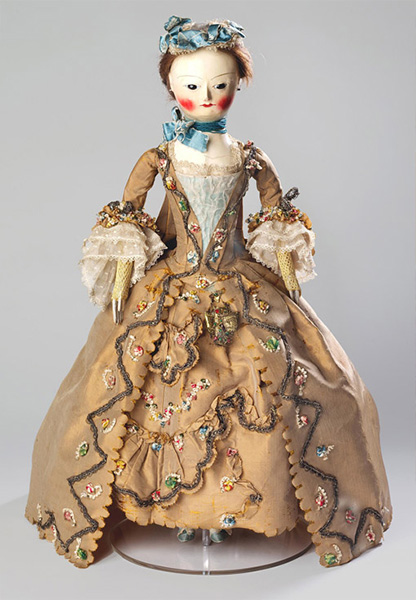
Mannequin doll – England, 1755-1760
© Victoria and Albert Museum, London
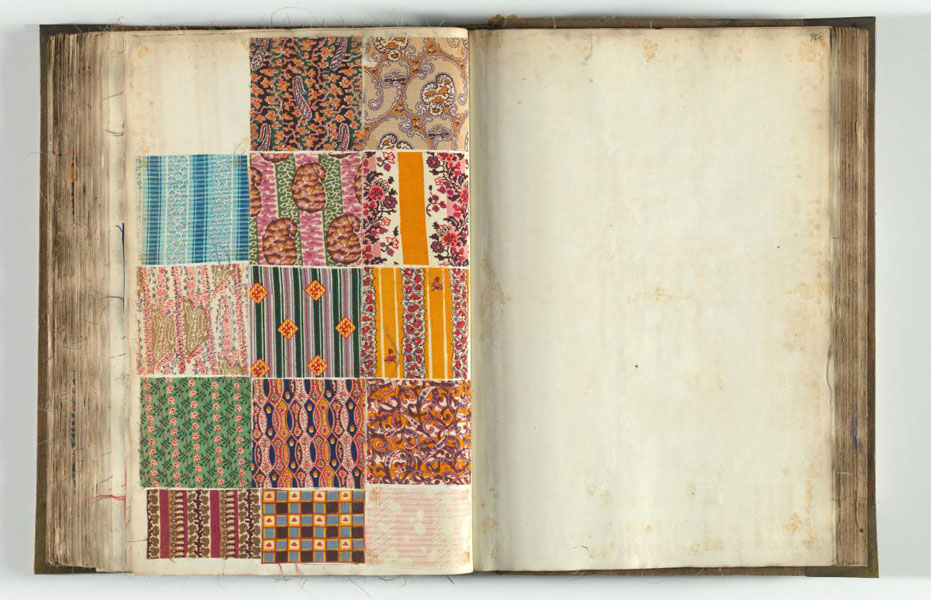
Claude Freres book, 1842-1843
© National Gallery of Victoria, Melbourne

Mannequin doll – England, 1755-1760
© Victoria and Albert Museum, London

Claude Freres book, 1842-1843
© National Gallery of Victoria, Melbourne
Industrial Revolution and hunger for textile trends: let’s go to Paris!
The industrial revolution brought to a geo-localisation and standardization of textile production, there appeared the first industrial sample books showing fabrics that could be exactly reproduced.
Paris was glittering as the capital of haute couture and textile design and became a must destination for all the textile industrialists in search of inspiration.
Magazines reproducing fashion-plates spread, in the Gazzettes famous writers made comments on art exhibitions and the latest creations of couturie: fashion had become “fashionable”.
In such an effervescent climate, so hungry for novelty, a new curious professional figure was born: the swatch dealer.
In 1825 the French textile designer Victor Jean-Claude left the Vosges region to move to Paris, where he began to produce sketches and make research in textile materials of various origins to be proposed to the manufacturers of Sainte-Marie-Aux-Mines, a very important textile centre located in the north-east of France.
In 1834 his consultancy for local industry became an activity in all respects, a periodical subscription service addressed not only to fabric producers but also to schools and associations of textile designers. In 1878 the Jean Claude Frères company was awarded the medal at the Universal Exhibition in Paris: the official recognition of the media importance of textile trend books as a means of disseminating fashion news.
Over time this success led to a flourishing in France of a number of companies (Bilbille, Sociétes des Nouvautés Textiles, Textil Paris Echo, Modes et Techniques) linked to the publication of hautes nouveautés fabric swatches. The textile books – cahiers textiles – were still sold in the form of a subscription: the service was very expensive but yet lower than the cost of a trip to Paris or other capitals, where fashion trends were coming to life.
At the end of the 50s, the French publishers of textile trend books gradually close down, giving way to the advent of Parisian bureaux de style .
Made in Biella textile trend books: what dies in France revives in Italy.
The Italianization of textile books is one of the factors that between 1950 and 1970 introduced the great season of Made in Italy. While in France the activity of book publishers was declining, Italy, and exactly Biella, was preparing their great relaunch.
The Biellese region has a millenary textile tradition, still today it is one of the main places of production of valuable fabrics worldwide. In the 50s, in the midst of an economic boom, the Biellese area became a Silicon Valley of textile: many young lions, just graduated, pursued the entrepreneurial dream and founded micro companies, small wool mills as well as weaving, warping, spinning mills.
Pietro Alberto, who graduated in textile design at the Istituto Tessile Quintino Sella in Biella (a school that in the post-war years had an European prestige), started working at a very young age at the best wool mills in Biella, and at the same time he created exclusive women’s fabrics for Maestrelli-Milano, at the time the most important textile wholesaler in Italy.
Pietro Alberto knew very well the cahiers with French fabrics, in particular those of Claude Frères and, as an enthusiastic insider, realised that the Biellese fabrics, “his” fabrics, were more beautiful, more original, more fashionable.
In 1951, at the age of 21, he founded his company Pietro Alberto. Fashion novelties from Italy, no longer from France.
Textile trend books today: are we sure that they are no longer needed? Tangibility is the primary need and the last luxury.
Today the web provides a lot of contents. Backed by a bit of intuition and patience, everybody has the possibility to turn into a trend hunter.
The recent lockdown has strengthened the idea that everything can be lived on the web: buying things, going to school, cultivating relationships, presenting collection to customers. But it has also aroused a huge nostalgia for contact and touch.
There are experiences linked to our senses (taste, smell, touch), which are generated, understood and shared only through a material action. On the web we cannot eat pasta, we cannot smell a scent, we cannot touch a fabric.
The need for concrete references, so much cultivated by our forefathers, is still today a real need in the textile world.
Reality is a luxury. The textile trend books offer the luxury of a concreteness that the web cannot give us and also remind us that, before being transformed into clothes, shirts, skirts, fabrics are tactile stories, which assert the concreteness of fantasy and materiality we are so deeply longing for.
Thanks to:
- Campioni in stoffa. I campionari tra storia, tecnica e arte, Giovanni Vachino, DOC.BI. Centro Studi Biellesi
- Histoire de la médiation entre textile et mode en France: des échantillonneurs aux bureaux de style (1825-1975), Maillet Thierry
- Immagine di testata: allegato relativo a una commessa di Pannilana da Barcellona a Firenze, 1402- 1403. © Archivio di Stato di Prato, Fondo Datini







